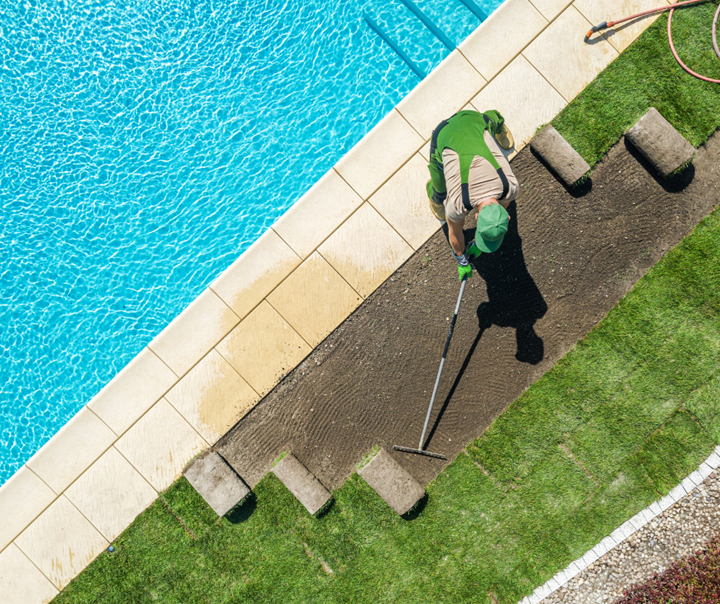Even in quiet times, issues related to maintenance, repair, and replacement are some of the more difficult ones we deal with as community association attorneys. And they are among the most common. A significant number of questions we receive about townhomes and condominiums pertain to maintenance. We also regularly get asked to speak on the topic, such as this recent Who’s Going to Fix My Property? session in Greensboro.
I’ve been a licensed real estate broker for over 37 years. Back then (which was before the explosion of HOAs/condos or passage of the NC Planned Community Act or the NC Condominium Act), maintenance issues as to real estate were fairly straightforward: maintenance obligations followed ownership. That is, if you owned something, you had to take care of it.
In today’s community associations, there are several things that can alter that default maintenance approach, including the governing documents, state statutes, and insurance. And as with any general blog, this column should not be taken as legal advice for a specific situation. That said, here are some general considerations about HOA/condo maintenance and repair responsibilities.
GOVERNING DOCUMENTS
The planned community or condominium declaration (sometimes called the “declaration of covenants, conditions, and restrictions,” “declaration of condominium,” “restrictions,” “covenants” or “CCRs”) is a contract between the members and the association. It also can change the usual rules of responsibility. For instance, consider a townhome. The townhome unit owner actually owns the entire unit right up to the footprint, which includes the roof, the interior, the floor, and even the dirt under the building. However, the declaration likely provides that the townhome association is responsible for maintaining certain items that belong to the unit owners, such as the roof. In other words, while the unit owner owns the roof, the contract of the declaration provides that the association will be responsible for roof maintenance. Ownership hasn’t changed, just responsibility.
Because words matter, we as community association attorneys always have to carefully review a specific declaration to determine who is responsible for a specific item. In townhomes, roofs are usually the responsibility of the association, but they don’t HAVE to be. Sometimes the phrase “exterior building surfaces” is used and at other times the word “exteriors,” those are different. Sometimes the term “exterior improvement” must be interpreted—does that mean a driveway? A gazebo? A Sasquatch statue in the yard? “Lawn” and “landscaping” maintenance responsibilities for lots may also be given to the association.
Several items in townhomes are regular trouble areas: exterior doors, doorbells, satellite dishes, patios, porches, steps, and construction defects. To avoid dealing with every situation on a case-by-case basis, some associations prefer to adopt a “maintenance resolution” that outlines both association and owner maintenance responsibilities and then provides a chart/grid that lists the most common maintenance items. If such a maintenance resolution and chart is of interest, contact me (email Jim Slaughter) or one of our other HOA/condo attorneys.
STATE STATUTE
Several state statutes can impact who is responsible for either the maintenance or the paying of maintenance for certain items, depending on circumstances. By way of example, for associations subject to the Planned Community Act, one statute provides that if a “lot owner is legally responsible for damage inflicted on any limited common element, the association may direct such lot owner to repair such damage.” Similarly, the NC Condominium Act provides that if damage “for which a unit owner is legally responsible and which is not covered by insurance provided by the association pursuant to G.S. § 47C-3-113 is inflicted on any limited common element, the association may direct such unit owner to repair such damage.”
The NC Condominium Act has numerous insurance requirements for condominiums created on or after October 1, 1986. And there are even more insurance and repair requirements for stacked (multi-level) condominiums. For instance, NCGS § 47C-3-113 provides that in stacked condominiums, the association must generally maintain insurance on the entire building, including all units. That same condo statute provides that in almost all instances “any portion of the condominium for which insurance is required under this section [i.e., everything] which is damaged or destroyed shall be repaired or replaced promptly by the association.” As a result, repairs to damage in a stacked condominium, even if to a unit, is often the responsibility of the association.
WHO PAYS?
The question of who must make necessary repairs is separate and distinct from who may ultimately have to pay for the repairs. That distinction can again be the result of state statute and/or the governing documents.
For instance, the Planned Community Act provides that if “a lot owner is legally responsible for damage inflicted on any limited common element,” and the owner doesn’t make the demanded repairs, the association “may itself cause the repairs to be made and recover damages from the responsible lot owner.” The Planned Community Act provides elsewhere that “If any common expense is caused by the negligence or misconduct of any lot owner or occupant, the association may assess that expense exclusively against that lot owner or occupant’s lot.”
Similar language exists in the Condominium Act. If there is damage to limited common area “for which a unit owner is legally responsible and which is not covered by insurance provided by the association pursuant to G.S. 47C-3-113” and the unit owner doesn’t make demanded repairs, the association “may itself cause the repairs to be made and recover the costs thereof from the responsible unit owner.” Another condominium statute provides that “If any common expense is caused by the misconduct of any unit owner, the association may assess that expense exclusively against his unit.”
The declarations in some townhome associations provide that certain types of damage (e.g., fire, lightning, windstorm, hail) are to be assessed to the owner once the association completes the repairs. In other associations, the declaration may provide that the owner can be “billed back” for certain repairs or that the unit owner is responsible for any deficiency in the amounts recovered from insurance due to the applicability of a deductible (i.e., the association didn’t get quite enough money to cover all the damages, but will get reimbursed by unit owners in proportion to their repairs). As a general aside: If unit owners and the association have the correct insurance coverage at appropriate levels, amounts due from owners is usually reduced or non-existent.
NOTE: Just because an owner is responsible for certain costs does not always mean the association can simply place the amount on the owner ledger as an assessment. While some amounts can be treated like assessments, others must be pursued as other claims for money or breach of contract. It depends on the specific circumstances and governing document language, so legal advice may be necessary.
CASUALTY/INSURANCE CLAIMS
For purposes of this summary, I’ll keep the impact of insurance on maintenance and repair issues fairly brief: insurance coverage can turn usual repair responsibilities upside down.
For example, we have a single-family homeowners association where the declaration makes the association responsible for ordinary maintenance to fences in owners’ yards. The fences belong to the homeowners, but the association maintains them. However, when a storm last year blew the fences completely away, was that “ordinary maintenance”? No. The owners ended up making claims to their property insurance for their fences along with other damages.
Generally, insurance coverage only applies in instances of “casualty,” which is defined as a sudden and unexpected loss. Slow water drips don’t usually count as a casualty. Storms and fires usually do. In the event of a casualty, claims should be reported by both owners and the association to their insurance. That way, any insurance that might apply to the situation can be “adjusted” as to coverage.
Several common insurance issues are:
- Who carries the insurance? In some townhomes, the association only covers the common areas with insurance. In other associations, the documents require that the association purchase insurance on the entire property, including the units. Who has the insurance can impact who makes the claim.
- What’s the amount of the deductible? We see deductibles that range from $5,000 to $50,000. The higher the deductible, the less money will be received in the event of a loss. The higher the deductible, the less the insurance is likely to cost each year. Insurance is all about balancing risks.
- Who’s responsible for the deductible? Depending on who carries the coverage and the language of the declaration, either the association or the homeowner may be responsible for amounts not covered by insurance. It’s important to understand the difference.
CLOSING THOUGHTS
1. UNDERSTAND YOUR DOCUMENTS AND LAW. The first time to think about maintenance, repair and replacement issues is not after a loss, but much earlier. There should be a clear understanding of who is responsible for specific maintenance/repair items, who is responsible for paying for them, and if there are insurance ramifications.
2. RESOLUTION TO CLARIFY. Townhomes and condominiums may wish to consider whether a “maintenance resolution” and chart of items would help alleviate confusion as to who is responsible for certain items.
3. EXPLANATION TO OWNERS. The more information owners have available, the better. If a maintenance resolution and chart is adopted, such information should be forwarded to owners and posted on the association website. It is much easier for owners to know what to expect in the event of a loss when that information has been readily available for years.
4. RELY ON PROFESSIONALS. Community managers, attorneys and insurance agents are regularly involved in decisions regarding maintenance, repair and insurance coverage/claims. Rely on them.
If we can be of help in resolving any maintenance, repair or insurance issues, contact a community association attorney with our Charlotte, Greensboro, Triangle, or Coastal offices.
Article provided by Jim Slaughter, who serves on the North Carolina Chapter Board of the Community Associations Institute and served as 2014 national President of CAI’s College of Community Association Lawyers. Article was originally posted here.


